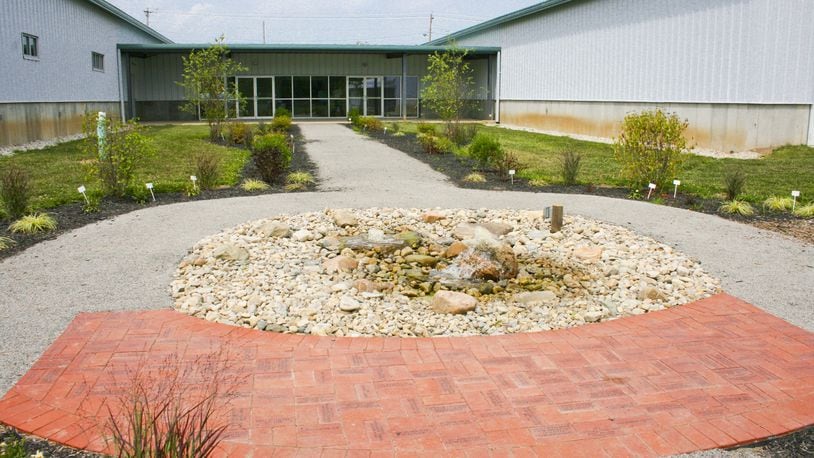“We’re going to put a big effort together so by this time next year, we’re going to have this building done,” Dixon said.
RELATED: Fair board overhaul, a hoard of volunteers and support have fairgrounds on right track
Turner told the Journal-News he was “tickled” to hear help is on the way.
The original estimate on the multi-purpose building was $1.7 million, and the board took out a $1 million loan in 2011 and an additional $150,000 to pay for it. The board hit a rough patch, cost overruns and other issues and ran out of funds before major things like the handicapped accessible bathrooms were finished.
The shell of the building, restrooms, walls lined with plastic and concrete floors make up most of the interior today, hardly somewhere to hold a wedding — although a couple have been hosted there. Turner said old estimates to completely finish the interior and add much needed parking and some outside adjustments are between $300,000 and $400,000.
“It is usable but it’s not done and it’s hard to rent it for the purpose the building was built for, like wedding receptions,” Turner said. “We’re not looking for a Lake Lyndsay, but we’re looking for something in between that’s pretty nice.”
Rental receipts totalled $93,801 in 2012, hovered in that range the next couple years and jumped to $153,701 in 2016 and $142,474 last year, according to state audit reports. Operating revenues have remained steady in the $625,000 — nearly half comes from admissions — range over the past few years and expenses run about $1 million. But the fair also took in $439,792 in donations and contributions — these are not considered operating revenue by the state. With that revenue and some other receipts, the fair board ended last year with $139,622 in the bank.
Turner said they have advertising sponsorships, like the sale of advertising banners that decorate the grounds during the fair. There are other donors too, like Chad Danczyk of Bear Hollow Wood Carvers, who has turned over the proceeds from the auction of his wood carvings three years running for the building fund.
MORE: Intricate wood carvings bring bucks for building fund at the Butler County Fair
Dixon said they don’t have a concrete plan for how they are going to help, perhaps enlisting some outside benefactors like the visitors bureau and Hamilton Community Foundation — both of whom helped get the building finished this far — could be part of the answer.
“If they don’t have it finished, and they don’t have something they can really rent, then there’s no real revenue ever coming in,” Dixon,” said. “It needs a little help right now, a little push to make it financially stand on its own and we’re going to be looking at how to help them do that.”
Butler County Visitors Bureau Executive Director Mark Hecquet said he hasn’t been approached about helping the fair board, but since they frequently use the venue, “I’m sure we’ll be part of the conversation.” Likewise, John Guidugli, president of the Hamilton Community Foundation, said they will certainly consider any applications the fair board might tender.
The state audit report shows the agricultural society is paying $69,044 annually on the two building loans for the next few years — the amount is scheduled to increase with interest rates — and the board made $10,956 additional principal payments in 2016 and 2017 each. The total $1.7 million loan — including interest — is scheduled to be paid off in 2042 under the current schedule.
Turner said they have been making extra payments to try and knock the debt down, but it is still quite a big bill to erase without a big benefactor or more revenues.
“A million is alot of money. If we could have four or five years where we were doing $250,000 to $300,000 it’s not out of the question we could pay that note off sooner,” he said. “Right now that’s our goal is to get that monkey off our back.”
About the Author
